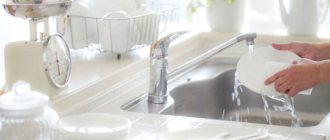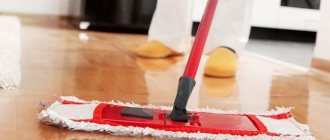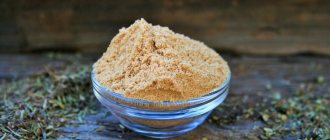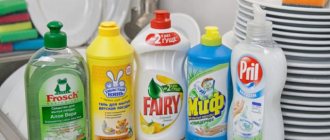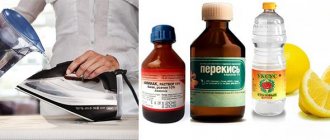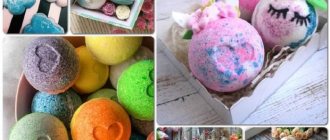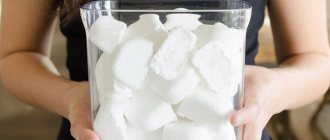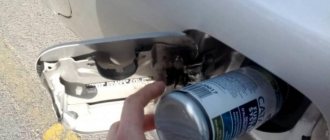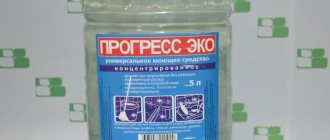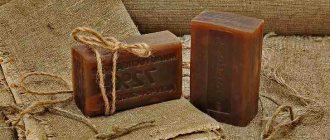In this topic we will look at recipes for homemade dishwashing detergents.
Today, homemade dishwashing liquid is extremely popular. Undoubtedly, household chemicals perform their functions quickly and efficiently, without leaving streaks or residue. And in stores you can see a riot of different bottles for every taste. But few people study the composition of these products and their effect on the human body. Therefore, we want to offer a harmless dish gel that you can make yourself.
Use of disinfectants
Most existing detergents today are produced exclusively in concentrate form. Subsequently, special working solutions of various disinfectants are created from them. They simply add water in a certain amount. After this, the resulting solution is used to treat various surfaces and absolutely all objects with which only a person can interact on a daily basis. Most tools, linens, utensils in the kitchen and food service areas use the immersion method. But if there is a need to treat a surface with a large area, then disinfection is carried out by irrigation or wiping.
How can I independently determine the concentration of the product that will be needed for processing? First of all, it is necessary to understand which object will be subject to disinfection, which of the existing modes will be chosen.
PSO using 0.5% cleaning solution
Procedure:
| Stages of manipulation | Justification of the need |
| 1. Wear protective clothing. | Maintaining a safe hospital environment. Protecting the health of personnel, because Disinfectants and detergents can irritate the skin and mucous membranes. |
| 2. Prepare a container with a 0.5% cleaning solution, check the temperature of the solution depending on the treatment mode. Note: See below for options for preparing the cleaning solution. | Ensuring the effectiveness of the solution. |
| 3. Immerse the medical device completely in a container with a cleaning solution, filling the channels and cavities, and close the container with a lid. | Ensuring the necessary contact of products with the cleaning solution, preventing evaporation of the solution and its contamination from the air. |
| 4. Maintain exposure. | A necessary condition for quality cleaning. |
| 5. Using cotton-gauze swabs, brushes, ruffs, clean the products (for each – 30 seconds) and place on the mesh. | Removing contaminants from instruments, from joints, from gaps, cavities, and gaps. |
| 6. Rinse the products under running water, the rinsing time depends on the detergent used: · Progress 2% soda solution – 5 minutes; · Lotus, Lotus-automatic – 10 min. Note: times are for all instruments | Rinse off detergent. |
| 7. Rinse each item in distilled water for 30 seconds. | Desalting of product surfaces. |
| 8. Dry the products in a drying cabinet until the moisture completely disappears at t = 85 o C. | In a humid environment, the growth of microorganisms sharply accelerates; moisture contributes to the destruction of glass products at the points of their connection with the metal. |
| 9. Carry out quality control of pre-sterilization cleaning on cooled products. | Inspection cannot be carried out on hot instruments, because there may be a false positive reaction of the reagent. |
| 10. Pack products depending on the type and mode of sterilization. | The packaging protects the product from contamination and increases the period of maintaining sterility after sterilization. |
Note: currently, PSO can be carried out using special equipment - ultrasonic washers and washing machines, which eliminate manual labor and improve the quality of processing of medical devices, and also ensure the safety of medical personnel and patients.
Options for preparing a 0.5% cleaning solution
(based on 1 liter)
| Components | Temperature | Exposition | Frequency of use |
| 5 g SMS (Lotus, Lotus-automatic, Progress) + 3% hydrogen peroxide 160 ml + up to 1 liter of water | 50 0 C | 15 minutes | Up to 6 times during a work shift, provided that the solution has not changed its color. |
| 5 g SMS (Lotus, Lotus-automatic, Progress) + 27.5% perhydrol 17 ml + up to 1 liter of water | 50 0 C | 15 minutes | Up to 6 times during a work shift, provided that the solution has not changed its color. |
| 5 g SMS (Lotus, Lotus-automatic, Progress) + 30% perhydrol 16 ml + up to 1 liter of water | 50 0 C | 15 minutes | Up to 6 times during a work shift, provided that the solution has not changed its color. |
| 5 g SMS (Lotus, Lotus-automatic, Progress) + 33% perhydrol 15 ml + up to 1 liter of water | 50 0 C | 15 minutes | Up to 6 times during a work shift, provided that the solution has not changed its color. |
Quality control of pre-sterilization cleaning
Quality control of pre-sterilization cleaning of instruments, syringes, needles and other medical products is carried out by performing an azopyram (universal) test - for the presence of synthetic detergents and blood residues.
Source
Types of disinfection modes
- In case of viral diseases;
- For fungal diseases;
- For tuberculosis;
- For any bacterial infections, with the exception of tuberculosis.
To determine the regime, first of all, it is worth starting from the epidemiological danger of a particular object. In public places, such as educational schools, in most cases, disinfection is carried out exclusively in accordance with the bacterial regime. If it is necessary to disinfect instruments in a hospital or beauty salon, then the mode used for viral diseases is selected.
In reality, sterilization differs only in the concentration of a particular solution and exposure time. Thus, when processing any items according to the most common regime for viral diseases, the most concentrated solution is used, as well as a greater exposure in comparison with the processing that is performed by specialists for bacterial diseases. The detailed instructions for any disinfectant always contain a table with a detailed indication of what concentration of the working solution should be used, as well as what exposure is needed in any of the modes when processing various objects.
DIY liquid soap recipes
Products based on laundry soap
To prepare dishwashing detergent from laundry soap, it is recommended to take:
1. Ingredients : laundry soap shavings (1 tbsp), glycerin (4 tbsp), water (500 ml), vodka (1 tbsp).
Cooking technology . Rub the soap on a fine grater and pour in half a glass of hot water. Place the container with the soaked soap in a water bath (or in the microwave), stir and gradually add the remaining water until the soap is completely dissolved. Then let the homogeneous soap solution cool slightly and add glycerin and vodka. While the mixture is warm, it remains liquid; immediately pour it into a suitable bottle with a dispenser. When completely cooled, the product will thicken and acquire a gel consistency.
2. Ingredients : laundry soap (50 g - a quarter of a bar), water (1.5-2 l), soda ash (2 tbsp.) or baking soda (4-5 tbsp.), essential oil (10 drops ).
Cooking technology . Rub the soap and dissolve it in water, as in the previous recipe. Add soda to the hot soap solution and stir (the soda should completely dissolve). Wait for the mixture to cool, add essential oil. Mix. It is more convenient to keep the finished thick gel in a container with a dispenser, since before use you need to shake it well and shake it to squeeze it onto the sponge.
3. Ingredients : laundry soap (50 g), baking soda (3 tbsp), ammonia (2-4 tbsp), dry mustard powder (3 tbsp), water (1 l).
Cooking technology . Dissolve the grated soap by adding hot water and stirring constantly. Add mustard and soda to the cooled soap solution, stir well, pour in ammonia, stir. The resulting cleaning product should be allowed to sit for several hours in a container with the lid closed. When ready, its consistency should be pasty. It is convenient to store this product in a jar or container of a suitable size with a lid.
Mustard remedy
To remove dirt from dishes, many people use mustard powder in its original dry form.
Dry mustard powder is obtained by grinding grains
When using dry powder, the main thing is not to dip a wet rag into a container of mustard, but pour it onto a sponge or directly onto the surface of dirty dishes.
To prepare liquid dish detergent with your own hands based on mustard, you need to stir 2-3 tsp. powder in 1 liter of hot water, whisking until thick foam forms. The resulting solution should be used immediately; for convenience, pour it into a suitable dispenser or sprayer.
Preparation of solutions of disinfectant detergents
Once the required concentration for the product solution has been determined, its preparation can begin. Actions must be carried out with personal protection. The minimum set is gloves, respirators and goggles. Creation and storage should be carried out in a room that will be designated for this and will not be accessible to other people.
You need to find special dishes made of plastic and glass. Pour the required amount of drinking water into it. She should be cold. To prepare the product according to the instructions, add concentrated disinfectant. Measure the volume using a glass / special measuring cap. The prepared aqueous solution is closed with a lid, a piece of paper is pasted indicating the name, concentration of the solution, instructions for the disinfectant, and the date of preparation. Having found a table on the Internet, it is very easy to calculate the proportions yourself, which can then be used to create any volume of working medium.
Advantages of use
Modern household chemicals contain complex surfactants, caustic substances that are not washed off immediately, but leave behind an invisible film. Unlike purchased products, homemade liquid does not have a toxic effect, is easily removed from the surface and perfectly performs its main function - cleans the surface of grease and dirt.
Homemade washing mixtures have many advantages:
- do not cause allergic reactions and are safe for the body;
- the ingredients are cheap, which saves money;
- economical to use, as only a small amount is required for cleaning.
The cleanser can be prepared in various consistencies - liquid, gel, paste. The choice depends on the nature of the contamination; for example, liquid and gel are excellent for removing greasy marks. It is better to use a paste to whiten cups and glasses.
You can store your homemade washing mixture in any convenient container - just pour it into a plastic or glass bottle with a dispenser, or use a small jar with a screw cap.
Features of preparing disinfectants
If you need 10 liters of solution (1%), then according to the rules you need to take a container, pour 9900 ml of water, add 100 ml of a disinfectant prepared in advance to the water. For use you get just 10 liters of solution.
When preparing the working solution of the product, follow all the proportions. A mistake is allowed: 10 liters of water are poured, then 100 ml of disinfectant. This is incorrect, since in this case it will not be possible to achieve a 1% concentration of the working solution.
Is it possible to wash dishes with laundry soap?
It is allowed to use laundry soap to wash dishes. It contains only natural ingredients - vegetable oils, fatty acids, sodium salts. At the same time, there are no harmful phosphates and surfactants in it. Laundry soap effectively breaks down fats due to its high alkali content and has a bactericidal effect.
Moreover, for dishes it is preferable to use a classic brown bar 72%; white may contain dyes, fragrances and preservatives. It is also undesirable to use liquid soap called “Laundry” for washing dishes and pots; it is better to prepare the product yourself.
Attention! Laundry soap dries the skin of your hands very much, so you need to use them only with gloves.
Safety precautions
The head of any institution must understand that the schedule for processing premises is his responsibility, as well as the health of each employee. Every employee involved in the use of disinfectants always undergoes safety training.
“The highest officials of each of the constituent entities of the country are obliged, together with companies, to take the necessary measures to ensure a disinfection regime,” notes epidemiologist and hygienist A.Yu. Popova.
In accordance with the sanitary standards in force in the country, citizens under 18 years of age and persons with allergic diseases cannot be allowed to work with disinfectants of any kind. Employees whose direct responsibilities include using disinfectants according to schedule must have a health certificate. The state obliges them to undergo special medical examinations.
When working with disinfectants, you should always use protective equipment. They are provided by the head of the company. It is important to avoid getting the disinfectant on an open area of the body. This can lead to consequences. You cannot eat or drink while working with disinfectants. Or it will become a violation. After completing work, the employee must wash their hands thoroughly with soap.
If the disinfectant gets into your eyes or skin, you should immediately rinse the area of contact with running water. It is the employer's responsibility to ensure that there is a first aid kit available to each employee.
In the context of the active spread of coronavirus, during the cold season, measures aimed at combating the epidemic should under no circumstances be neglected. It is important to perform high-quality, regular sanitization of all work surfaces, including all objects with which you interact daily.
Benefits of Using Homemade Cleaning Products
90% of store-bought household chemicals contain substances that are harmful to health. These are anionic surfactants, chlorine, sodium hydrochloride, phosphates, formaldehyde, phenol and cresol, triclosan. Manufacturers add such components to cleaning products because they effectively remove stains and have disinfectant properties.
Harmful powders, gels and sprays have only two alternatives:
- organic detergents;
- homemade cleaning recipes.
The former cost on average 1.5–2 times more than ordinary household chemicals. And if you carefully study the composition, it turns out that manufacturers are often disingenuous when they call their product environmentally friendly.
Homemade cleaning products are truly safe for your health if they are made from natural products. They can be confidently used in a home where allergy sufferers, small children and the elderly live. At the same time, the production of household “helpers” around the house costs housewives mere pennies.
Soap and soda solution for washing dishes
To wash dishes, a gas stove and other kitchen utensils, you can prepare a soap-soda solution, which is not inferior in cleaning properties to ready-made dishwashing detergents and is safe for health.
For such a solution you need:
- Grate 100 g of soap on a coarse grater;
- put the soap in 2 liters of water, heat and stir until dissolved;
- cool the solution;
- add five tablespoons of soda and one spoon of dry mustard;
- bring to a boil, but do not boil.
